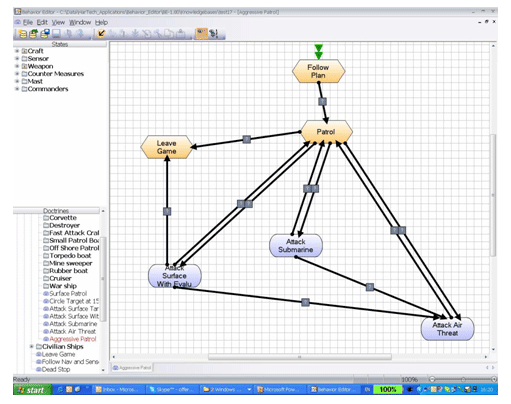 |
User Friendly Behavior Editor - this application enables the User (Domain Expert) to define the required behavior and reaction paradigm. |
 |
 |
Run time decision making algorithm which implements the required behavior as a function of the perceived situation. |
 |
| The Behavior Editor is a user friendly GUI application which enables the Domain expert to define the behavior of the entity using the drawing of a State-Machine. |
 |
 |
 |
| The behavioral modeling of the CGF is based on a multi-layer modular decision making paradigm which includes: |
 |
 |
Situation Perception - This module is responsible for generating the perception of the entity based on the received information (simulated or real sensors). |
 |
 |
Decision Making - The decision making is done by our "Decide" module, this modules exercise the techniques defined by the Domain expert based on the perceived situation. The decision module is a combination of a State-Machine and SOAR. |
 |
 |
Logical Interpretation of Decision to Physical Actions - the logical instructions generated by the Decide module are interpreted to physical actions which are to be exercises by the platform. Each domain of actions is interpreted by a different controller ensuring translation of the logical action decided to a physical action that can be executed by the platform. |
 |
 |
Implementation of the Physical Actions - The Physical actions are implemented by a dedicated module which is responsible for the physical management of the platform. This can be a Simulation Module or an actual controller such as an Automatic Pilot System. |
 |
 |
 |
The behavioral model implemented is constructed of several models which operate asynchronously but in concert in order to produce a logical behavior of the CGF.
The main advantages in this multi-layer architecture are:
|
 |
Modularity - enabling high level of reuse of the code in different applications |
 |
 |
Close linkage between the Domain Experts knowledge and the end system behavior |
 |
 |
Application independent |